Poles, they’re actually a pretty big deal
They make more of a difference to technique than you’d think. Finding the right poles costs little but pays off big time. It’s the first upgrade to make to your setup when taking things up a notch. Here’s our selection of the best on the market, both telescopic and one piece.
- Author: Claudio Primavesi
- Photographer: Nicola DamonteGiovanni Danieli
You’d think it would be the very last item on your list, and in practice it often is when putting together a touring setup, excluding specific uses like racing.
And yet poles aren’t an insignificant detail. Seasoned tourers, like pro athletes and former cross-country skiers, don’t make their decision lightly. They know very well that at a high level every last detail counts, and that poles play an integral role in overall technique, both on the way up and the way down. Of course, the very first thing to consider is the size.
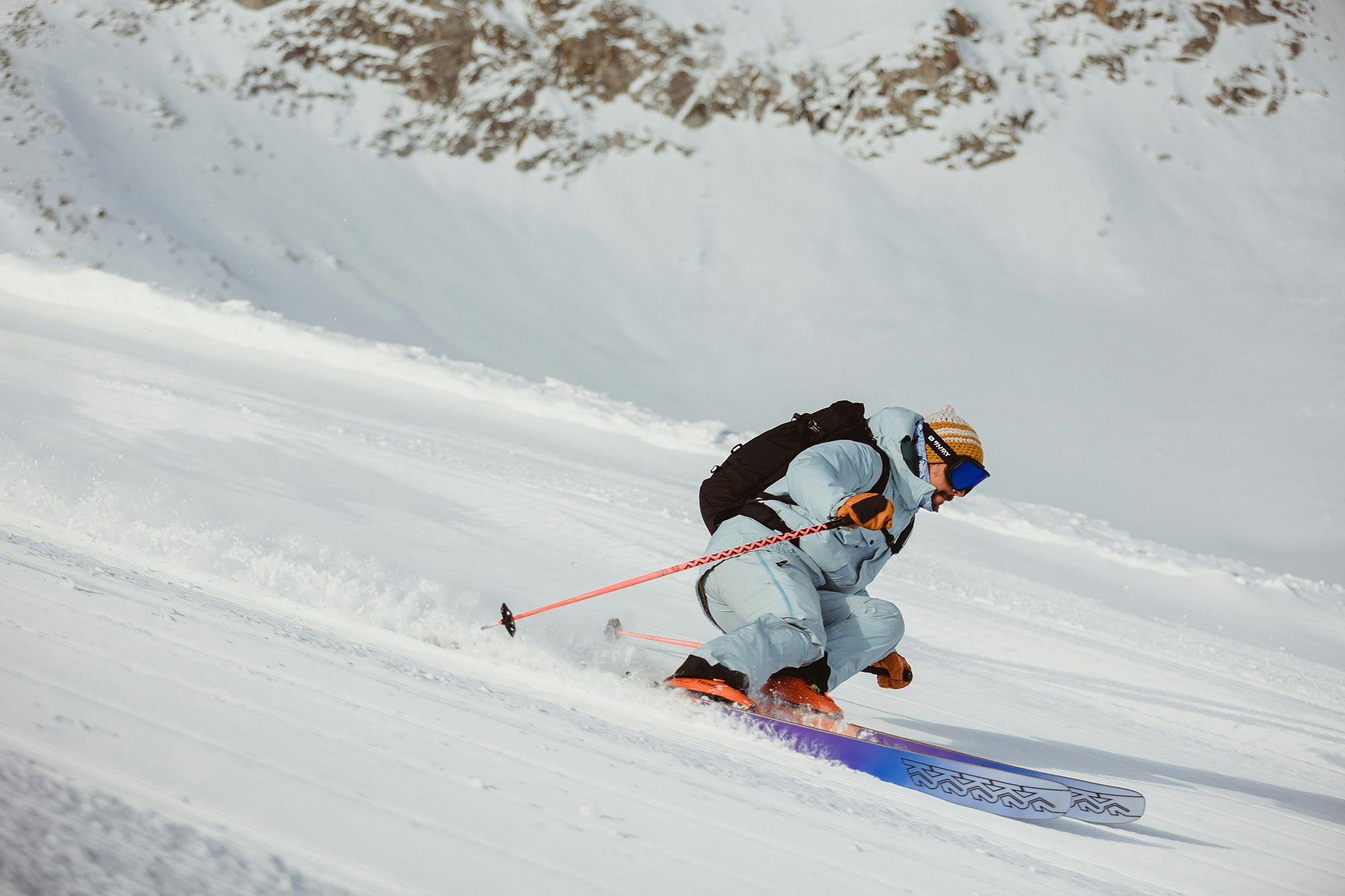
The shorter the better
Ok, that’s a bit of a stretch, but the fact is a lot of us tend to use poles that are longer than necessary. A few years ago, a survey of our testers and other professionals found that the length of their touring poles corresponded to their height in cm multiplied by 0.67. Professionals and brands recommend reducing by a few centimeters for technical/aggressive skiing, deep powder and steep slopes; even shorter for freestyle and park skiing. In any case, after combining the recommendations of various brands, the magic number is between 0.68 and 0.70 (touring and light styles). One's stature x 0.76 seems a good general criterion instead for the committed sporting approach and racing.
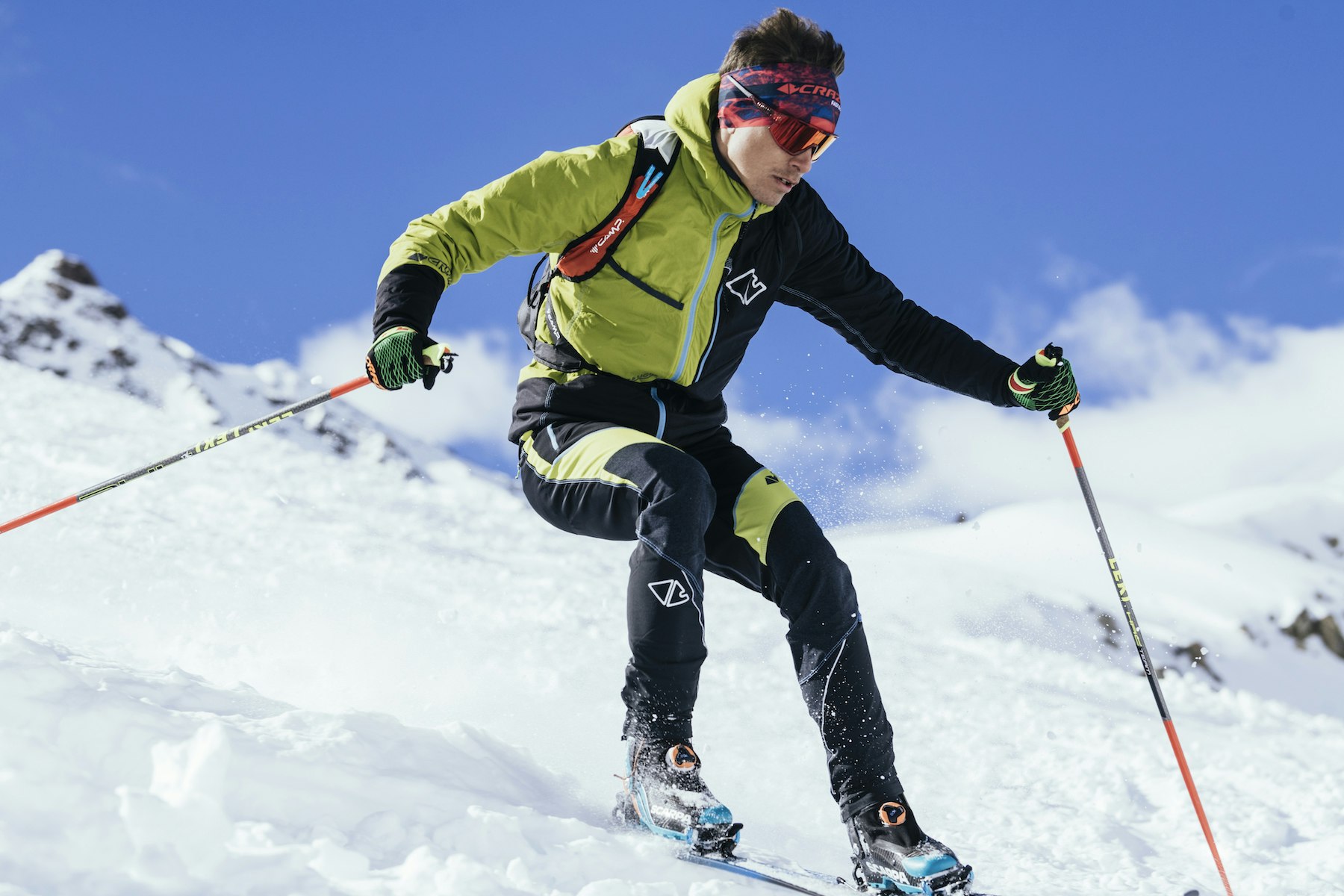
How many sections?
A fixed-length, one-piece pole is responsive, solid, precise, lightweight, durable and more balanced than its two/three piece counterparts which also include locking mechanisms and overlapping sections. At the opposite end of the spectrum, three-piece telescopic poles are often dull, heavy, sluggish, not very wind resistant, and susceptible to breakage. They work best for tours when you need to stow them away in your backpack (leaving your skis to pitch a difficult north-facing route, with a long but easy and dry return to your skis—basically never) as they take up less space when closed. Halfway between the two extremes, there are many two-piece telescopic poles that, towards the upper end of the price scale, are almost as good as a fixed-length pole. With just one locking lever, which these days are pretty sturdy, you have an acceptable amount of play and responsiveness, especially if the lower piece is in carbon and the basket is moderately sized, around 80 – 85 mm in diameter for average use.
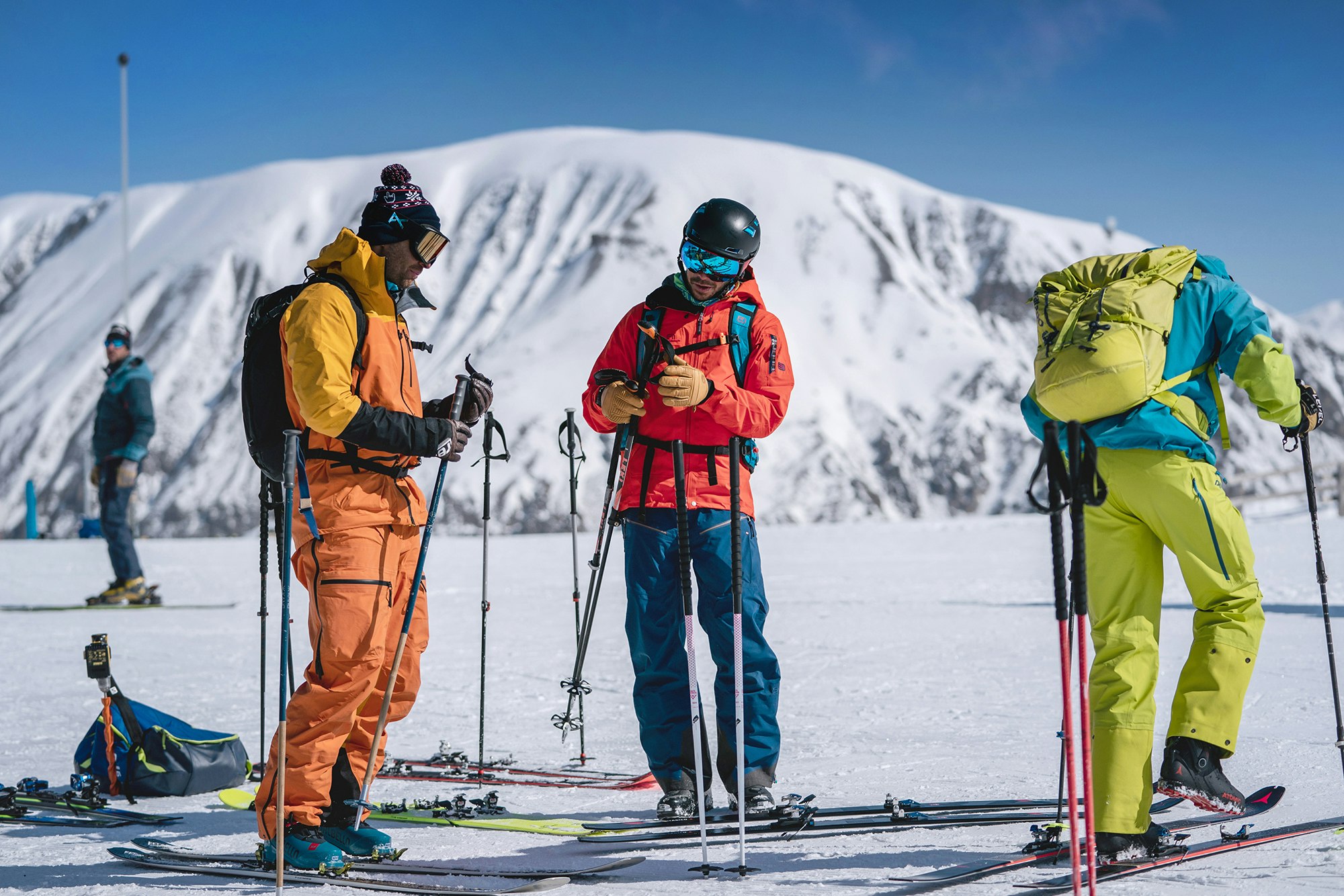
The shaft: aluminum, carbon or hybrid?
There are notable differences even within the two families of materials, but carbon poles are generally stiffer, lighter and more responsive than aluminum.
Mechanical resistance 101: you could say (half-seriously) that carbon breaks but doesn’t bend, while aluminum bends but doesn’t break. In reality though, these days breakages are rare. Aluminum shafts, especially low-quality ones, tend to deform if weight is put on them during a fall, or they get stuck somewhere (holes, roots, between rocks). If they’re not too badly damaged, it just takes a little elbow grease to straighten them, even out on the mountain, but they won’t go back to how they were. Experienced skiers will be able to read the terrain better using a more reactive carbon pole, as well as gain more control and speed at their wrist, especially when using tips that are correspondingly lightweight.
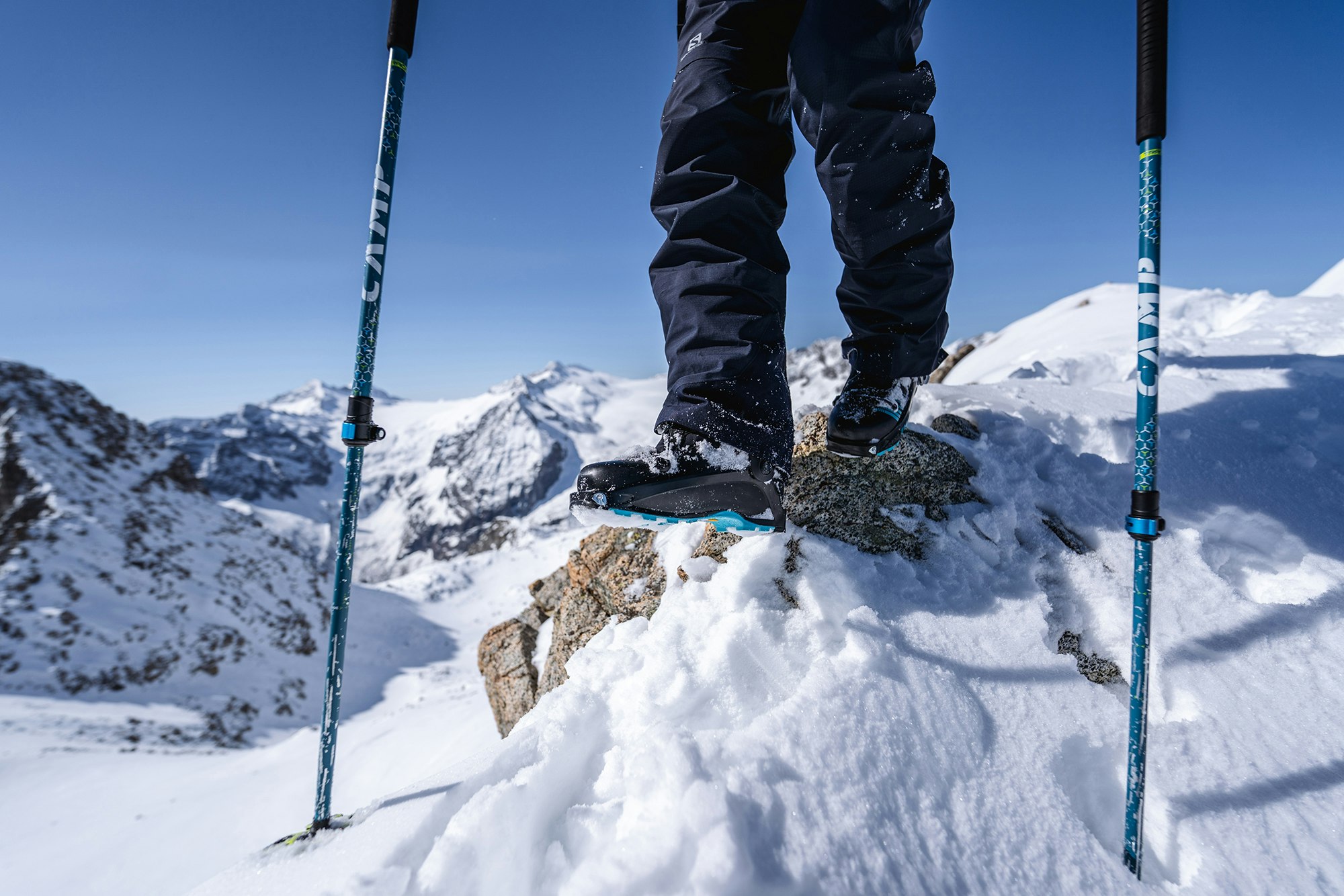
Tips: Widia and friends
Carbide, aka Widia (from the German WIe DIAmant—like diamond—created in 1926 by Krupp from sintered tungsten carbide), is best. Steel, even tempered, doesn’t have much grip on rock, ice or tarmac and is subject to wear, causing the tip to blunt even more quickly than crampon points.
Cylindrical tips, either hollow or with teeth (the former is better as more durable and versatile on different types of terrain, only rarely does it fill with snow) are better with touring/freeride poles, or high-quality alpine ski poles. They have enough bite in every direction and with the average plant angle. While you can’t sharpen them at home, they last a lifetime, are very difficult to break and almost all manufacturers sell replacement tips. Diagonal tips are used for race poles, and are slanted for better grip, but only in the direction of travel, with little adherence horizontally but a lot vertically. When descending on foot on rocky terrain, poles with this type of tip should be held facing inwards, something which very few do in practice. It creates a risk of slippage, partly due to the basket slanting in the same direction and gouging the ground beneath. They are the only tips that are guaranteed to grip on any type of tarmac, even frozen (they are used for roller skiing), and, if they’re well looked after, on smooth rock. They’re easily sharpened at home from time to time, though you need the right grinder, water for constant cooling and to know what you’re doing.
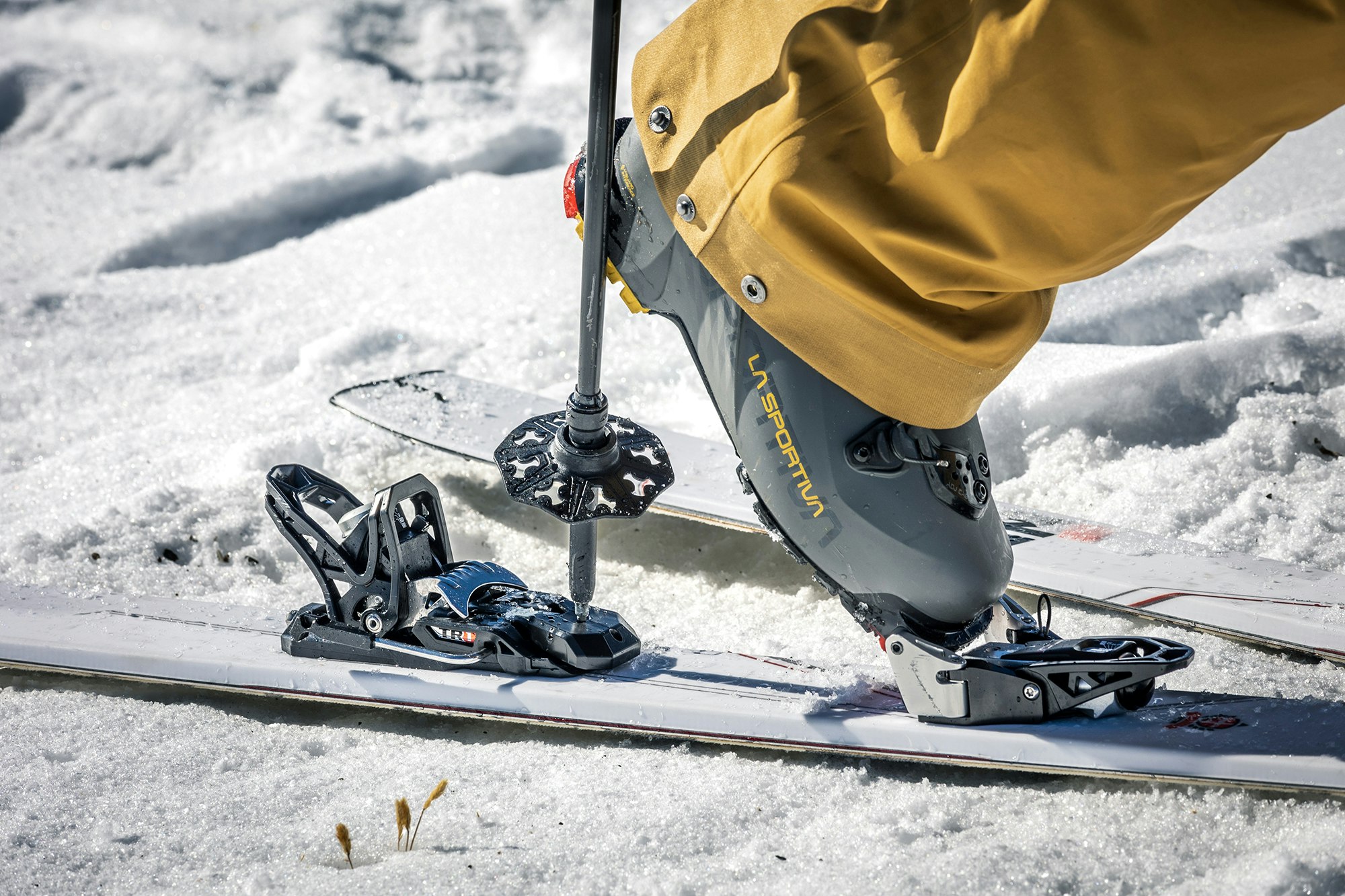
Basket: stiff, soft, tilting or race?
In the majority of cases, poles for touring and freeride have a classic basket. Some have a straight edge that has been hardened and sharpened to scrape clumps of snow off your skins while resting the tip of the ski on your shoulder. The number one problem with baskets though isn’t their size or the amount of support they provide, but them getting stuck in the snow when climbing or skiing.
Soft plastic baskets are therefore better, ideally divided into 5-6 independent sections or petals. Even when skiing fast they sweep more evenly through/on the snow. Baskets that rotate and tilt provide extra grip when walking to tourers who maintain rhythmic movement of the arms with a swing parallel to the direction of travel and passing reasonably close to the body. But they aren’t always the best in unexpected situations, especially if staying afloat is hard and they can’t tilt, or when removing them from holes in hard snow. To reduce the number of times this happens and to guarantee a more consistent grip on the terrain, for less expert tourers we recommend a good amount of length in the bit of plastic between the basket and the tip. Race and speed poles use directional baskets, with only the rear coming into contact with the terrain. This eliminates the problems associated with round baskets, which can get stuck in the snow or caught on uneven terrain. It does, however, create a problem for less expert tourers: remembering to turn the pole on certain terrain to get purchase.

Handle: contoured or race
Handles that are shaped to follow the contours of the hand, like those found on alpine poles, are suitable for touring and freeride. They offer control even over heavy poles and precision when planting, thanks in part to their ergonomic shape, which also transmits more information to the hand of the skier when the internal pole grazes along the ground during a turn.
For a sporty, more competitive feel, and in accordance with race regulations, slim handles with a uniform, oval shape without finger notches are more suitable. They are similar to less specialized cross-country poles and leave the hand free during the push and release phase. In competitions there are often sections where double poling, skating, side-stepping and herringbone, and basic kick-and-glide technique is required. All techniques that, when well executed, require you to push down and then recover the handle with an open hand, known as the swing. Grip materials: cork, these days usually compressed with plastic or glue, is not old-fashioned, nor is it only for esthetes. Its light weight is not the determining factor it once was, these days its thermal properties are what make it so popular, as that tiny amount of friction created when it comes into contact with gloves or skin creates more warmth than other materials. Cork is an excellent natural insulator with high thermal inertia. Hard plastics are cold: smooth and inexpensive, but with very little thermal inertia. Foam, usually made from EVA, is one of the most commonly used materials these days as it is resistant to knocks and cuts as well as warm.
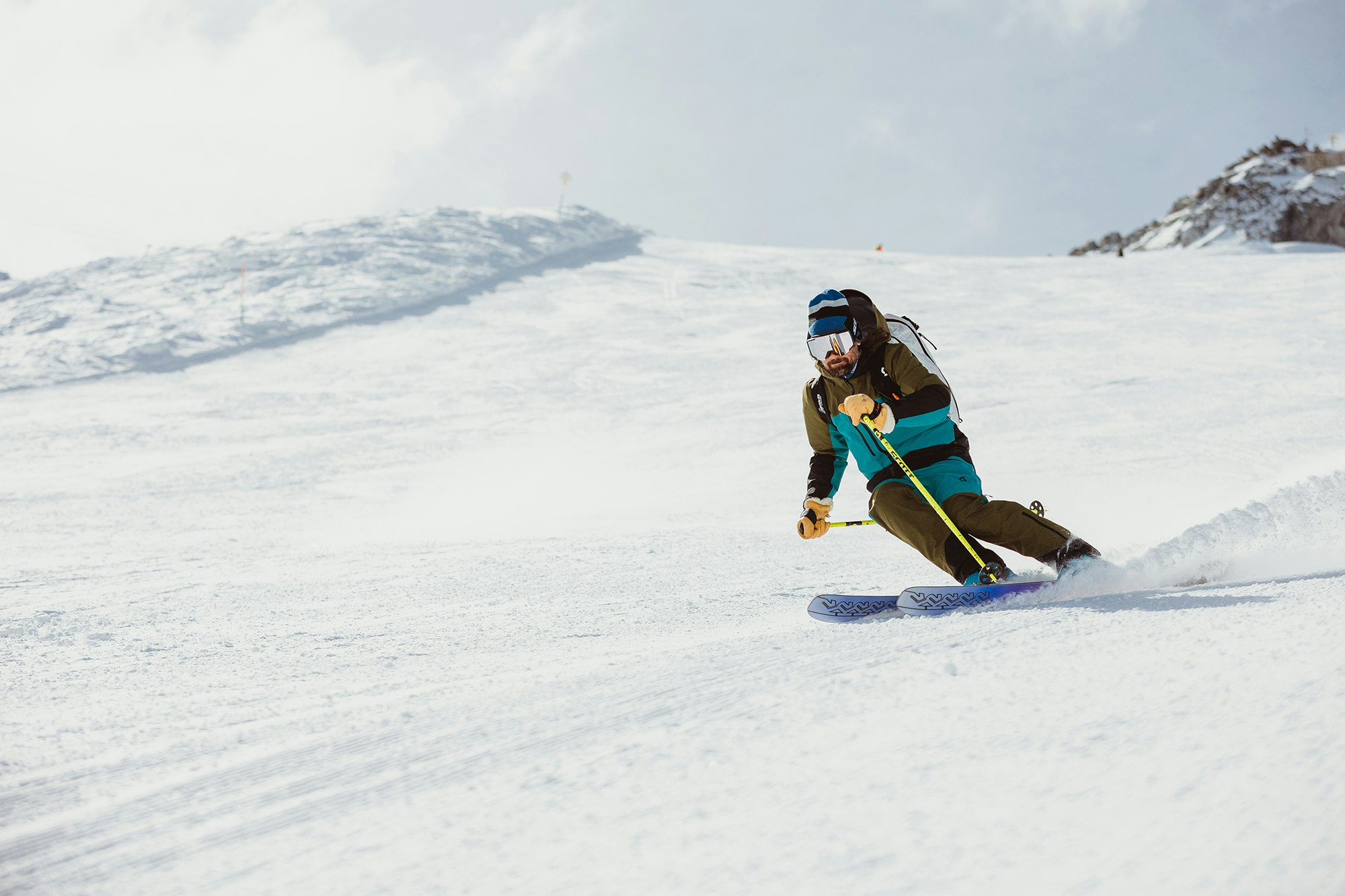
Strap: loop or harness?
The harness-style strap with release clip is for competitive athletes who have the time and energy to practice putting them on and taking them off during transitions. Otherwise, it’s a lot more fiddly than a straightforward loop strap.
It doesn’t always click into place first time, click straps require attention, and maybe a deep breath, to get it to do so. The trusty loop strap just requires one deft movement, and you can be on your way. Also, the slightly padded ones with a sewn border are stiffer and remain open, making it easier to put your hand through and they don’t get folded or tangled when paired with a gloved hand. As for the effectiveness of the safety release mechanism, there are no available data; we tried tugging at them on the test bench, but they didn’t open, presumably they do during an avalanche, so they can’t do any harm. Lately, the thing to do seems to be not using straps at all. It’s what all the cool kids are doing and looks like you’ve just got back from Chamonix. The more you know...
Share this article

